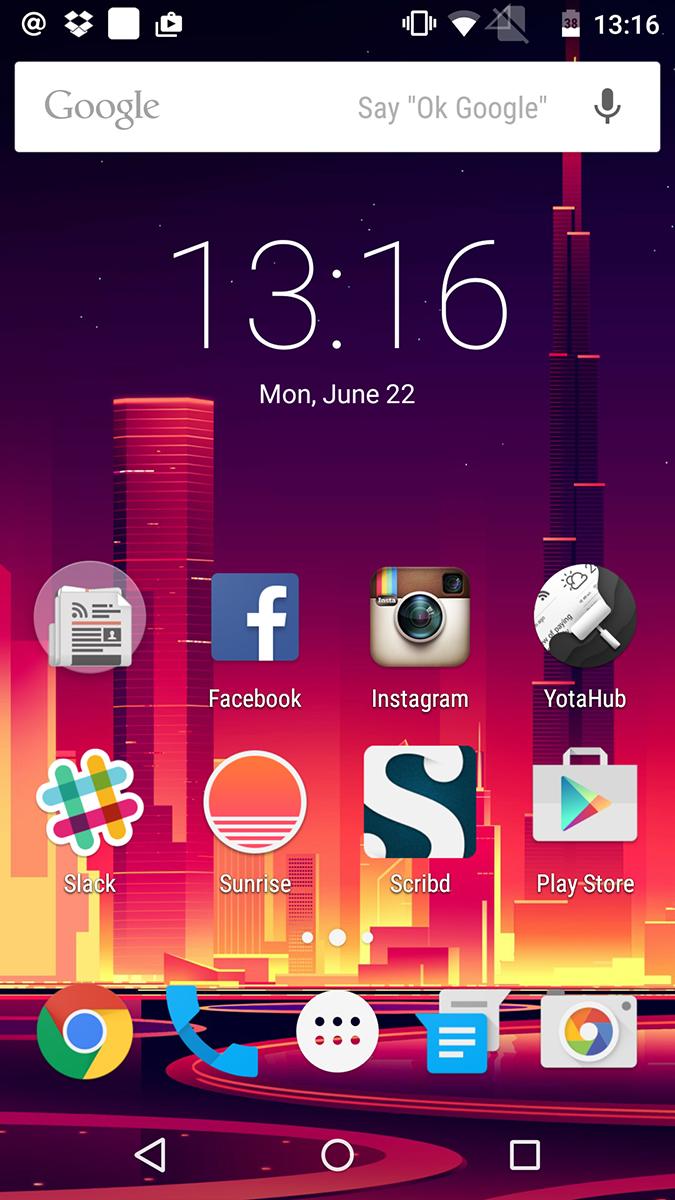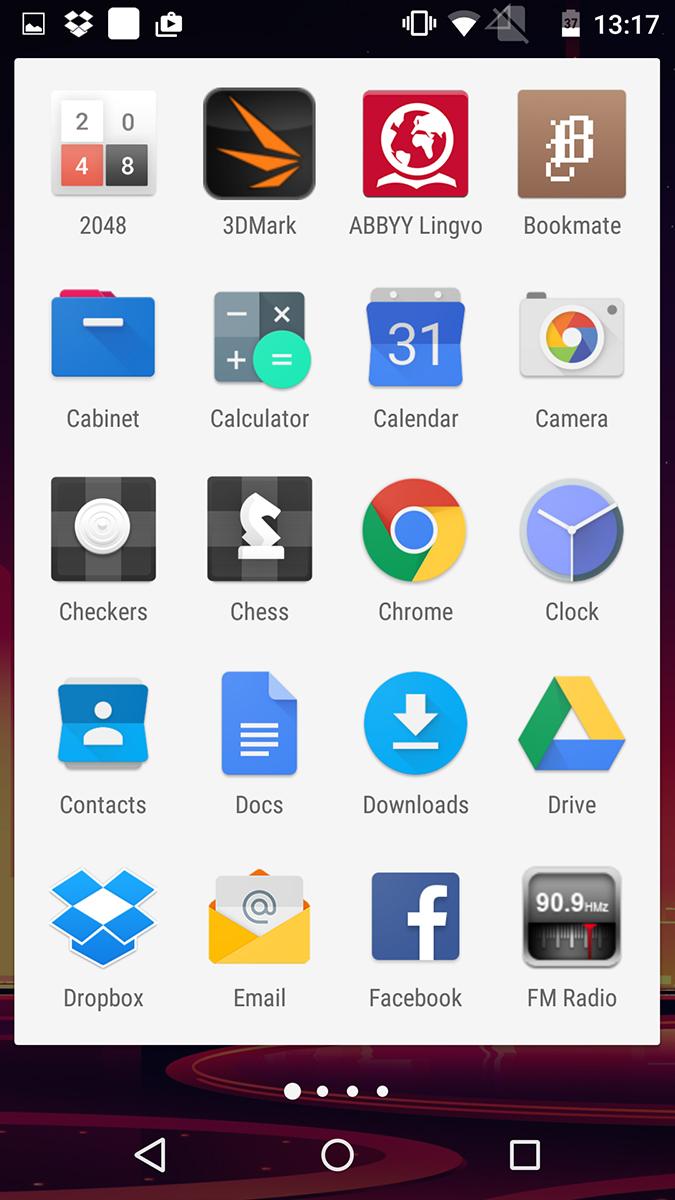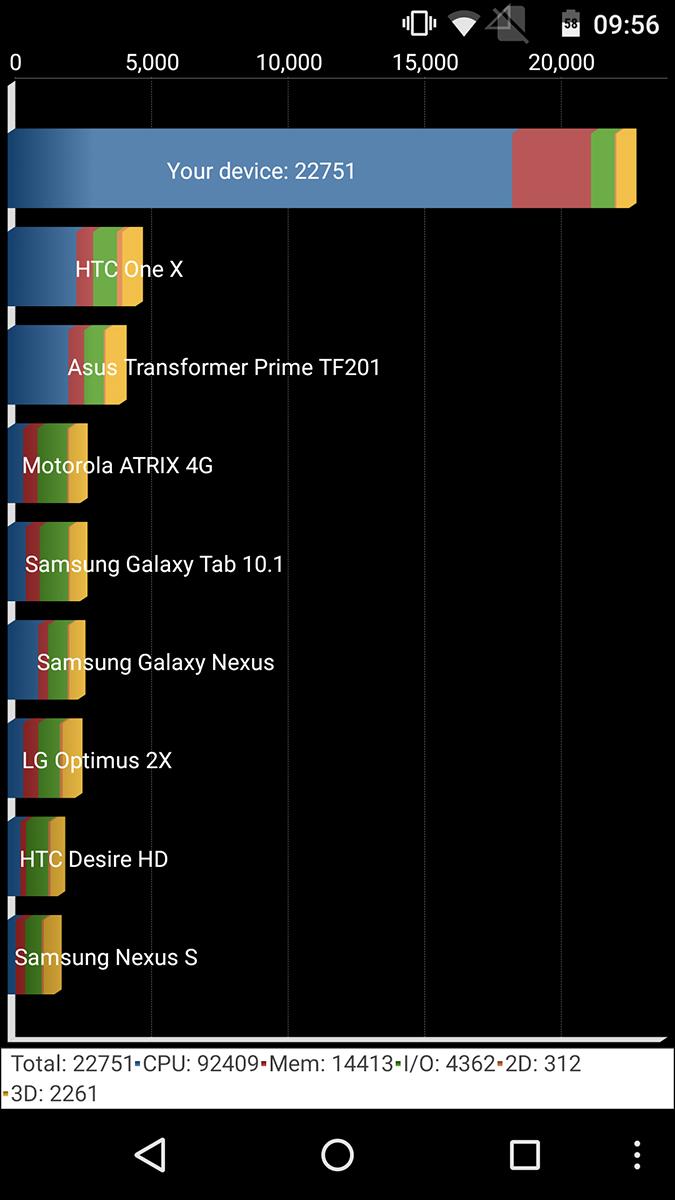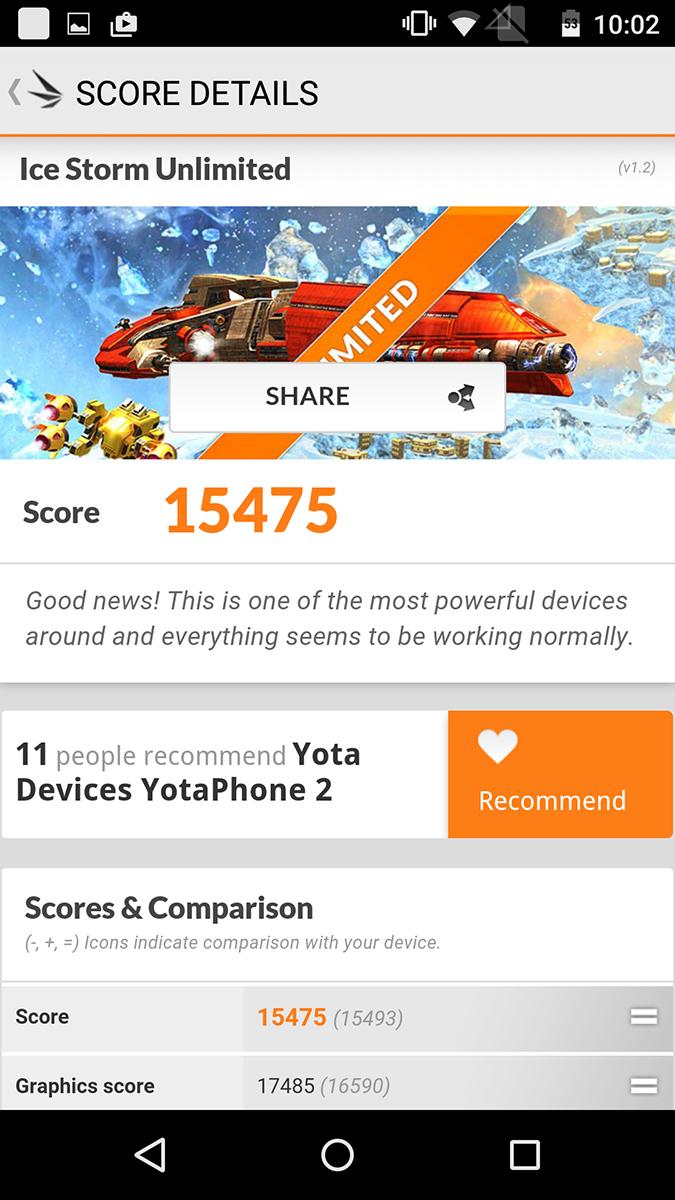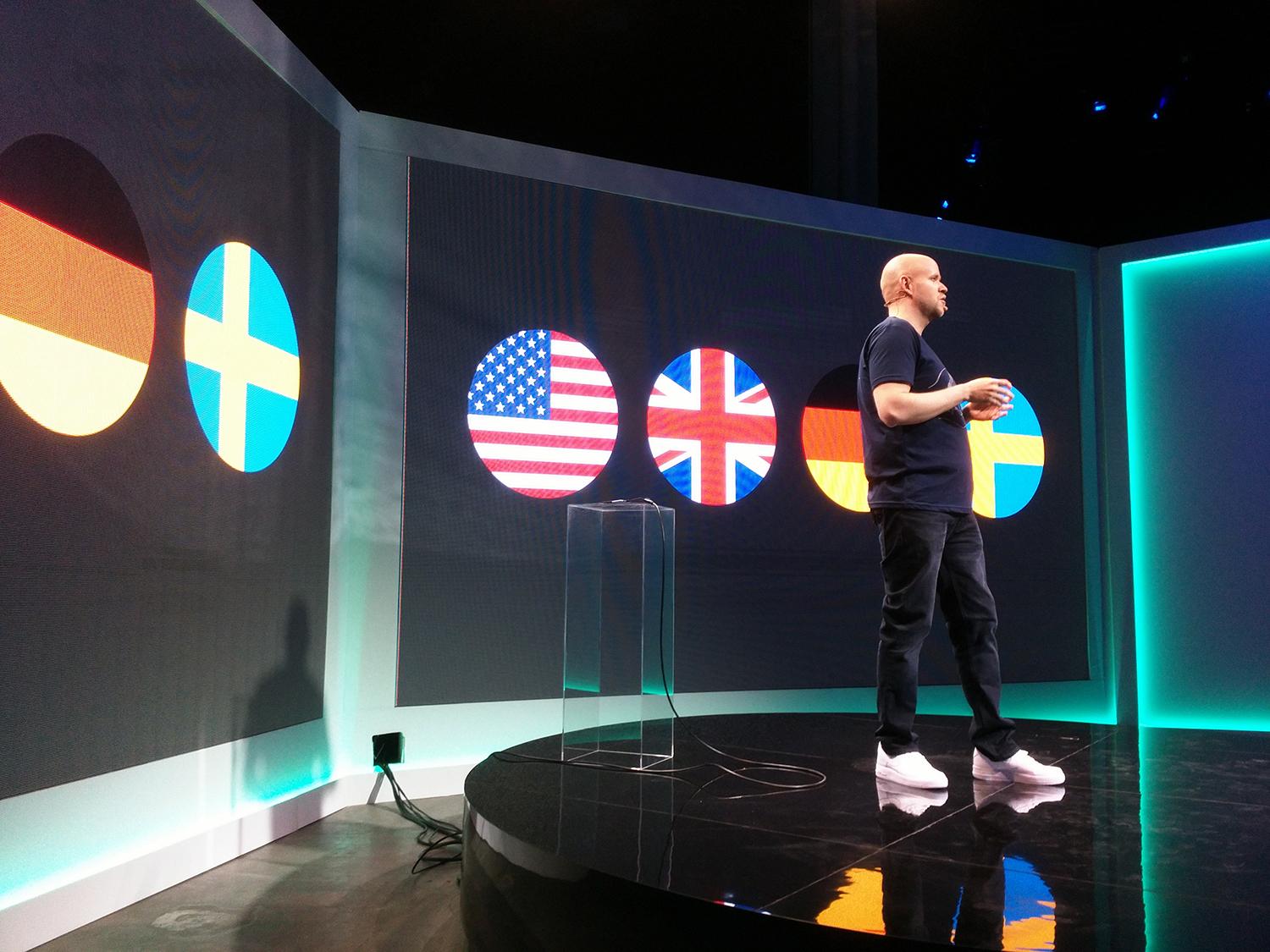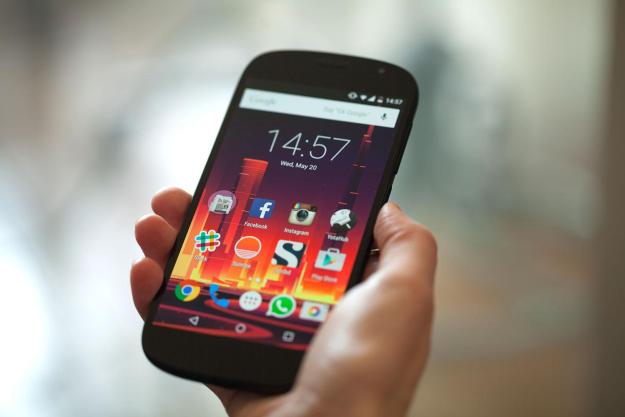
“The YotaPhone 2’s extra e-paper screen is useful and awesome, but it’s price is high at $500 (without a contract).”
- Dual-screen design is innovative and useful
- E-paper screen is great for avid readers
- Android Lollipop 5.0 looks nice
- Al-day battery life
- Average cameras
- Simplistic design
- Last year’s processor
- Somewhat expensive
It isn’t every day you come across a phone that makes you look twice. Most smartphones look more or less the same these days, and innovative specs are few and far between. The few devices that break the established mold are typically prototypes that don’t work terribly well or will never see the light of day. The YotaPhone defies all these stereotypes and does something truly astonishing in an age when smartphones have plateaued: It innovates with a purpose.
The YotaPhone 2 has two screens, an AMOLED touchscreen and an e-paper (E Ink) screen, one on either side of the 9mm thin phone. Putting two screens on one phone may sound like utter madness, especially given what we know about the desperately short life of smartphone batteries, but Yota says the second screen will actually extend your battery life and impress you with its abilities.
We used the YotaPhone 2 as our main phone to see how well it holds up against its more traditional competitors and whether the second screen is worth it, or just a gimmick.
Two screens are better than one
It’s no secret that we’ve got a smartphone addiction. A 2013 study by Kleiner Perkins Caufield and Byers found the average user checks their phone nearly 150 times each day. Around 18 of those checks each day are just to find out what time it is, and every single one of those times that you turn on your screen, unlock your phone, and swiftly check your email, Facebook, or the time eat up your phone’s battery little by little.
YotaPhone’s second screen eliminates the need to power up your phone to check for notifications or the time, because it’s always on. Just like a Kindle or any other ebook reader, the YotaPhone’s e-paper screen is low-energy and can last for a long time, while using very little battery. You can always see the time, how many notifications you’ve got, the amount of battery that’s left, the weather, calendar, and dozens of other customizable metrics.
Since it has a 960 x 540 pixel resolution, the black and white e-paper screen is quite crisp, clear, and easy to read. Perhaps the coolest thing about it is that it eliminates the need for you to carry around a Kindle for reading. Yota’s book app works on the e-paper screen for reading, and it doesn’t eat up the battery either. It’s great for reading, and I enjoyed leaning back with titles from various reading apps, including Google Play books, the YotaReader, Bookmate, and Scribd.
The YotaPhone 2 comes with a YotaHub app where you can decide which screens you want included on the e-paper screen. Yota’s already made several of its own screens, all of which you can edit and alter to suit your needs, or you can make your own screens with the many different widgets Yota provides.
My first e-paper screen shows the battery percentage, the time, weather, andnotifications for calls, texts, emails, and other alerts. In addition, it also has the ebook reader, and in the third position, I’ve got a monthly view of my calendar with a detailed section underneath that displays my next appointment. Other screens will even show you the text of emails and messages, news from Feedly, your contacts, maps, a music player, and more.
Aside from its two screens, the YotaPhone 2 looks very plain.
Yota offers so many options that you could almost live only on your second screen. With the YotaMirror feature, you can check any of your apps on the e-paper screen, and even swipe through your different home screens just as your would on the color screen. The e-paper screen has the added benefit of being easy to read in full sunlight, too. Of course, it will occasionally prompt you to turn over your phone to view an app on the AMOLED screen, so you do need the bright, colorful, power hog of a screen sometimes.
That said, the 5-inch, 1080p AMOLED touchscreen is bright and beautiful. Although many will quibble that it’s not Quad HD like most flagship phones, it is Full HD (1080p), and looks crisp.
Generic looks
Once you get beyond the fact that the YotaPhone 2 has two screens, you’ll quickly realize that its looks are very plain. The phone itself is a small, rectangular slab with smooth, rounded corners. There’s no Home button or speakers on the flat plain of the phone’s face, and the YotaPhone branding is appropriately placed on the e-paper side of the device, because that’s truly the star of the show. The phone feels sturdy, solid, and smooth – unlike the first YotaPhone, which was more flimsy feeling.
The phone’s frame tapers significantly on the sides to accommodate the rounded e-paper screen, but it does limit the amount of space available for buttons and ports.
The oddest part of the simple design is the power button and volume rocker. The volume rocker pops out to function as the SIM card tray, which makes the button less stable and a little creaky. You can wiggle the button and hear it move around loosely. The power button is more stable and located right below the rocker, which can be confusing sometimes. I occasionally hit the volume rocker instead of the power button. Another oddly placed port is the headphone jack, which sits atop the phone like an old-school iPhone.
Although the YotaPhone 2 certainly won’t win any beauty contests, its second screen adds a touch of flare and intrigue to the device.
Last year’s specs don’t slow things down too much
The YotaPhone 2 isn’t the youngest, most advanced phone on the planet at this point. Its spec list was almost up to date a year ago when it first launched (it only recently came to the U.S.), but now, its Qualcomm Snapdragon 800 processor is considered old, though its 2GB of RAM is still satisfactory. The phone isn’t a speed demon, but it isn’t slow or clunky either. There were occasional lags with apps like Facebook when we first started testing the device, but at that point, Yota was still working to optimize Android Lollipop 5.0 to suit its phone. After a software update, most of the lags vanished, and the YotaPhone 2 performed well.
If you care about benchmarks, on the Quadrant benchmark test, the YotaPhone 2 managed to score 22,751, which is on par with last year’s HTC One M8, though it doesn’t stand up to the 34,700 points the One M9 tallied. The Ice Store Unlimited test didn’t go so well for the YotaPhone 2, though. It pulled off 15,475 points. That is to be expected from a phone that’s using last year’s processor, but benchmarks rarely tell the whole story. Unless you’re playing graphic-intense games on the YotaPhone 2, it’ll run just fine, and you’ll have no cause for complaints.
The YotaPhone 2 does run a little hot when downloading many apps at once or running benchmark after benchmark on it, though. It’s possible that the second screen and the relative thinness of the device are to blame for the hot back. Luckily, it doesn’t overheat often, and when it does, it cools off quickly if you leave it be.
Improved battery life when you use the e-paper screen
Although you’d probably think that the battery-hogging Snapdragon 800 processor and dual screens would kill the YotaPhone’s battery life, the 2,500mAh battery easily made it through a full day. Much like the iPhone, however, it needs it good charge every night, and busy days will hurt the battery life. We used it during a press event to take photos and tweet about the action, and the battery suffered. Of course, we had to use the colorful AMOLED side to do most of this, so the battery drain was expected. On days when we used mostly the e-paper screen, the battery lasted much longer.
Like most Android phones, the YotaPhone 2 does have a battery saving mode, which helps extend a measly 10 percent of battery for several hours. Overall, the second screen doesn’t hurt the battery life, though most days it doesn’t help improve it too much, either.
Sub-standard camera will do in a pinch
The YotaPhone 2’s camera isn’t great. Its 8-megapixel rear camera with an LED flash and autofocus is much lower-resolution than any other Android phone’s camera, and it doesn’t take the best pictures in low light. I used the camera to take pictures of a recent Spotify press event, which was very dimly lit, and most of the colors appeared washed out. Outdoor shots on sunny days looked nice when the sun wasn’t directly overhead, but full sunlight occasionally bleached out colors and resulted in overexposed shots.
The 2.1-megapixel selfie cam on the front of the device isn’t any better, and now that other Android phone makers are adding at least 5-megapixel shooters to the front of their phones, its lower resolution isn’t up to snuff.
Conclusion
Innovation is exciting, and when the YotaPhone 2 first came out, it was positioned as a high-end smartphone that had a little something extra to compete with the big boys. Now that it’s finally reached America, it’s a mid-range device with a cool quirk. The $500 price tag is steep for a phone of its caliber, but there’s no denying that the YotaPhone 2 is the most unique phone out there.
The YotaPhone 2 seems uniquely suited to a very specific customer: the tech-savvy reader who only wants to tote around one device every day. It can replace a Kindle. The e-paper screen acts as an ebook reader and something of a smartwatch, thanks to the notifications and clock displayed on the always-on screen.|
Yota’s Indiegogo campaign was met with enthusiasm and reached its goal quickly, which proved that people are interested. Even a few carriers have expressed interest in the device, Yota tells us. However, many users (at least in America) are unlikely to take a $500 gamble on a dual-screened phone. Additionally, at this point, it might be wiser to wait on the next YotaPhone, which will undoubtedly get better specs and be even more refined.
Yota is on a fascinating path that most smartphone makers don’t dare tread. It’s refreshing to see a company try something new, even if it sounds crazy, and if anything, the response Yota has seen from people the world over proves that we want meaningful innovations like the YotaPhone 2.
Highs
- Dual-screen design is innovative and useful
- E-paper screen is great for avid readers
- Android Lollipop 5.0 looks nice
- Al-day battery life
Lows
- Average cameras
- Simplistic design
- Last year’s processor
- Somewhat expensive
Editors' Recommendations
- Is the Nothing Phone 2a available in the USA? It’s complicated
- The Nothing Phone 2a just leaked with a truly unusual design
- The Nothing Phone 2a might be missing a very important feature
- Bend or break? Watch the Nothing Phone 2 face its first durability test
- Does the Nothing Phone 2 have a headphone jack?



